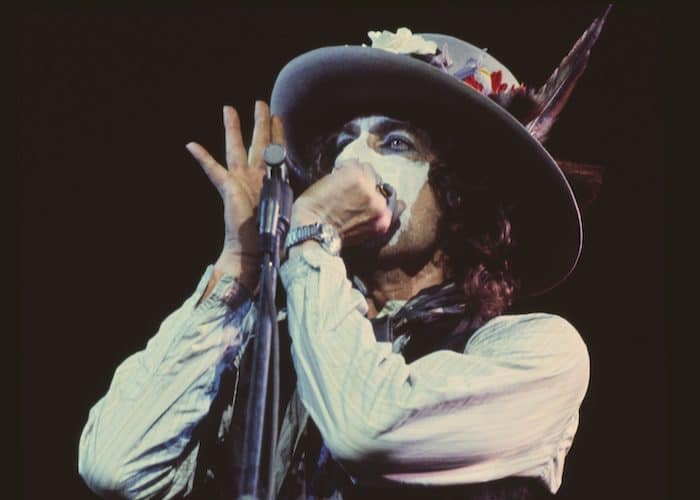In 1975, the Rolling Thunder Revue saw Bob Dylan team up with numerous musicians, including Joan Baez, Ronee Blakely, and Ramblin’ Jack Elliott, on a whirlwind tour across America, all with the intent of playing at smaller, more intimate venues in cities that might not always draw famous music acts. It was inspired by the Beat Generation — Dylan and company even visited Jack Kerouac’s gravesite at one point — meant to be personal, intimate, and for the people. It was and it wasn’t.
Now it is 2019, and the objective truths and solid facts of more than 40 years ago have been fractured, rebuilt, and fractured again through the anathema of time — or, were they ever really there to begin with? Enter the rambling Netflix Original Rolling Thunder Revue: A Bob Dylan Story by Martin Scorsese. Part concert film, part documentary, and part attempt at mythmaking, Martin Scorsese‘s “fast-and-loose with the truth” feature is one of the best films that the streaming giant has ever put out, bar none.
Throughout its entire runtime, Rolling Thunder Revue keeps its tongue firmly in its cheek as Dylan, Scorsese, and the fictionalized filmmaker Stefan Van Dorp allow legends to become truths. Despite the genuine and tangible and downright beautiful live concert footage from 1975 and 1976, everyone involved plays their cards close to their chests, and their decks are unfinished and filled with lies, anyway. Ever card is a Joker, and we, like Dylan’s music, just keep on rolling on. Just accept the film for what it is and let the gonzo storytelling and immolation of documentary truth floor you at nearly every turn.
Dylan may be the “spokesman of his generation” with songs such as “The Hurricane” and “Masters of War” speaking to specific anxieties of the time in which they were written and, sadly, have become timeless in both theme and intent. But do not let his credentials fool you for a moment; Bob Dylan is a mythmaker, a storyteller, and a man of many masks. His various stories and personas converge into a gravelly voiced, age-weary enigma. He dresses like a beatnik and embellishes facts and weaves interesting anecdotes that may or may not be true, but who cares? Have we ever been led to believe we should trust a word Dylan says? Maybe, but Scorsese and Rolling Thunder Revue argues otherwise.
There are questions upon questions, answers, and un-answers, and everything finds its way back to either Dylan in the present or Dylan in the ’70s, slathered in white face paint. The lovingly restored vision shows an artist at the peak of his live performance powers — sharp, decisive, mysterious, and ever-enigmatic. If I have one major problem with Rolling Thunder Revue, it is that I could have done with more of the concert footage.
The performances are riveting as Dylan commands the stage and his music echoes and booms like never before. But a lot of the concert footage is interrupted for cutaways to talking head interviews that, through the film’s intent and layout, are necessary but still take away the spotlight from the show itself. And, if we are all being honest here, that is what viewers will probably come to this film for, rather than the meta-bit that works more often than not.
Rolling Thunder Revue is a documentary concert film as much as Jaws is just a movie about a man and a shark. When you take it for what it really is — a sendup of truth that immolates its own interior narrative scene after scene — then it’s an immediately rewarding experience helped along by some of the best-restored concert footage that exists of Dylan. Really, the concert footage cannot be understated; it is completely transcendent.
But what Scorsese has done is create a time capsule that bridges the then of Dylan with the now of reality, when truth is more important than ever, and challenges us to believe that, if we just roll with it, maybe Dylan will eventually find his way to the truth. Or not, who cares? He sure doesn’t. Take what may be believable, go with it, and tap your feet to the familiar sounds of a harmonica and a gravelly voice.





